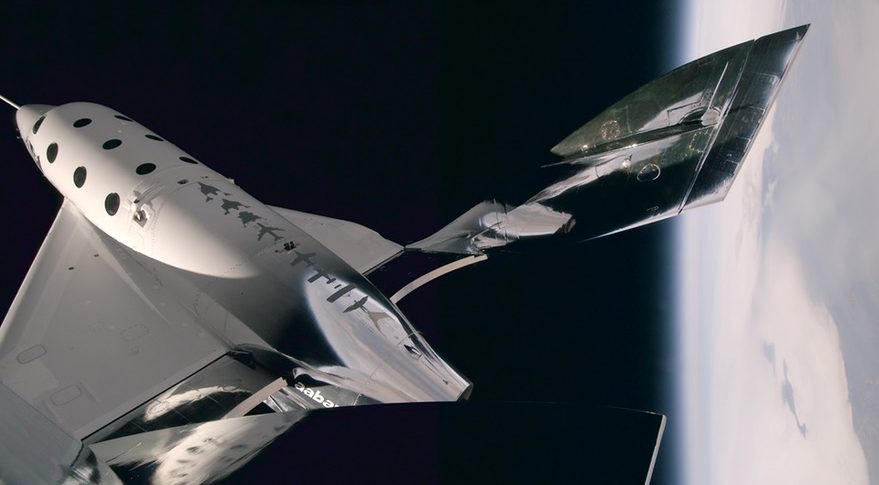Back in 2008, Virgin Galactic said that it will be offering sub-orbital tourist flights within 18 months but has, since then, been plagued by delays and a fatal crash that took place in 2014.
Even so, the company has proved stubborn enough to keep going, in spite of all the setbacks.
Virgin Galactic will be launching the fourth powered test flight of its VSS Unity suborbital spaceplane today and, if all goes well, the two pilots on board will be experiencing weightlessness and will observe some unforgettable scenery.
How well the VSS Unity performs will depend on how long it burns the rocket motor; during the previous flight, the rocket motor burned for 42 seconds and helped the vehicle reach a peak altitude of 52Km. Virgin Galactic hopes that the VSS Unity will go much higher on today’s flight and will fly high enough to reach suborbital space.
“We plan to burn the rocket motor for longer than we ever have in flight before, but not to its full duration.” Virgin Galactic said “At the end stages of the rocket burn in the thin air of the mesosphere and with the speeds that we expect to achieve, additional altitude is added rapidly. That results in new and important data points, particularly relating to supersonic handling qualities and thermal dynamics, both of which we will be watching closely in the cockpit and on the ground in Mission Control.”
On this particular test flight, the company is also carrying along four unnamed payloads through NASA’s Flight Opportunities program. The program provides research payloads to suborbital and other related flights which will also help simulate “the commercial weight distribution in the spaceship represented” by its “future passengers.”
Also Read: ✍️VSS Unity Breaks Mach 2 Speed During Test Flight✍️
✍️Virgin Hyperloop One’s Richard Branson Steps Down From His Role As Chairman✍️
Follow TechTheLead on Google News to get the news first.





















